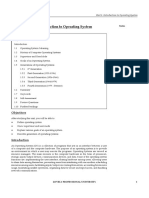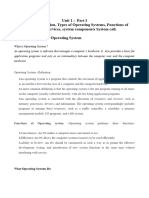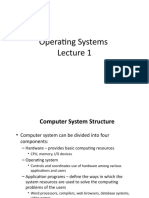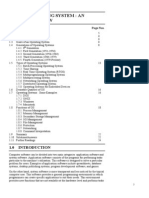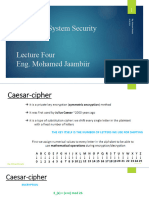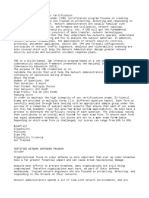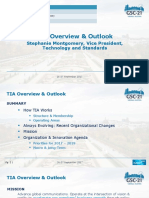0% found this document useful (0 votes)
52 views17 pagesOperating System Lecture 1
This document discusses the functions and components of an operating system. It describes what an operating system is, its goals from a user and system perspective, and key topics like processes, memory management, and security. The document also covers different types of computing environments and open-source operating systems.
Uploaded by
mohamed faisalCopyright
© © All Rights Reserved
We take content rights seriously. If you suspect this is your content, claim it here.
Available Formats
Download as PPT, PDF, TXT or read online on Scribd
0% found this document useful (0 votes)
52 views17 pagesOperating System Lecture 1
This document discusses the functions and components of an operating system. It describes what an operating system is, its goals from a user and system perspective, and key topics like processes, memory management, and security. The document also covers different types of computing environments and open-source operating systems.
Uploaded by
mohamed faisalCopyright
© © All Rights Reserved
We take content rights seriously. If you suspect this is your content, claim it here.
Available Formats
Download as PPT, PDF, TXT or read online on Scribd
/ 17








